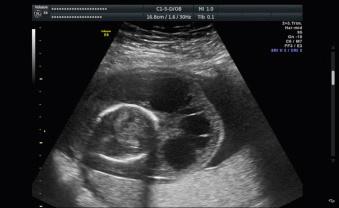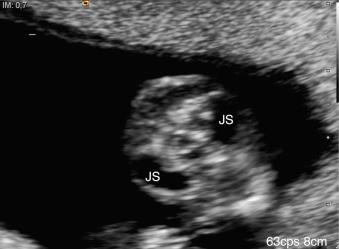Physical Address
304 North Cardinal St.
Dorchester Center, MA 02124
Cystic hygroma (CH) is a congenital lymphatic malformation. It is the most frequently observed fetal neck pathology on prenatal ultrasound (US).
CH is an abnormality of the vascular lymphatic system, characterized by the development of distended fluid-filled spaces, typically affecting the fetal neck (80% of cases). Based on the presence of septations, it can be classified into septated or nonseptated CH .
The true incidence of CH is unknown. It has been reported to be 1 : 6000 at birth and 1 : 750 among spontaneous abortions. Data from the FASTER (First and Second Trimester Evaluation of Risk) trial showed an overall prevalence of CH at about 1 : 100, whereas septated CH affects 1 : 285 fetuses in the first trimester.
CH is frequently associated with other malformations, particularly congenital heart defects (CHD) and chromosomal abnormalities (75% of cases). Some studies suggest that septations predict an increased likelihood of aneuploidies, but this notion has not been confirmed by others. Turner syndrome is the most common associated chromosomal abnormality, affecting approximately 60% of cases. More recent studies suggest a higher prevalence of Down syndrome. Other chromosomal abnormalities include autosomal trisomies, Klinefelter syndrome, partial trisomies, partial monosomies, translocations, and mosaicisms. Genomic microarray analysis may lead to a decrease in the number of undiagnosed genetics disorders when compared with conventional karyotype. Microarrays enable higher resolution, with 22q11.2 microdeletion being one of the most frequently detected imbalance overlooked by conventional karyotype. CH has been related to inherited disorders and malformation syndromes in euploid fetuses ( Table 70.1 ), maternal infection, and drug intake including alcohol, aminopterin, and trimethadione.
|
CH is normally caused by aberrant development of lymphatic vessels, as a consequence of an abnormal or absent connection with the venous system, leading to lymphatic stasis and enlargement of the jugular sacs ( Fig. 70.1 ). Progressive obstruction may lead to thoracic, pericardial, and abdominal effusions. However, if an alternative route of lymphatic flow is established, the distended lymphatic sacs collapse, and the hygroma resolves either completely or showing distended jugular lymph sacs on either side of the fetal neck ( Fig. 70.2 ).


Become a Clinical Tree membership for Full access and enjoy Unlimited articles
If you are a member. Log in here